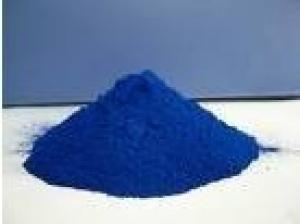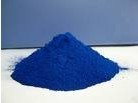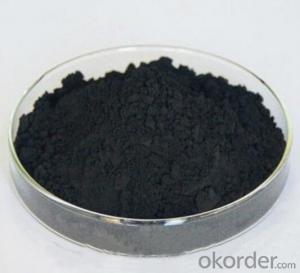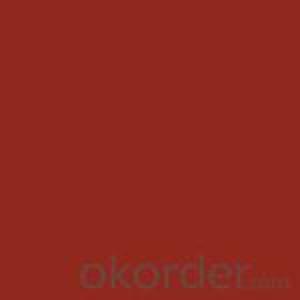Phthalocyanine Blue BGS 15:3
- Loading Port:
- Shanghai Port
- Payment Terms:
- TT or LC
- Min Order Qty:
- 1 Metric Ton m.t.
- Supply Capability:
- 7,500MT/Year m.t./month
OKorder Service Pledge
OKorder Financial Service
You Might Also Like
Production Details of Phthalocyanine Blue :
Production Details of Phthalocyanine Blue | |||
Chemical Structure | CuPc α | ||
Color Index No. | PB 15:0 | ||
Application | Ink | ||
Physical Form | powder | ||
Test Items | Index | Test Method | |
Relative Tinting Strength | 100 +_5% | DIN55986 | |
ΔE,ΔL,Δa,Δb | ≤1,+1,+1,+1 | ||
PH | 5.8~8 | DIN ISO 787-9 | |
Density 20℃ g/cm3 | 1.6 | DIN ISO 787-10 | |
BET m2/g | 66 | DIN 66131 | |
Oil absorption g/100g | 35~45 | DIN ISO 787-5 | |
105℃ Volatile Matter | ≤1.0% | DIN ISO 787-2 | |
Water Solubles | ≤1.5% | DIN ISO 787-13 | |
Residue on Sieve 100 mesh | ≤5% | DIN 53195 | |
Conductivity us/cm | ≤300 | DIN ISO 787-14 | |
Solvent Resistance | Index | Test Method | |
Water | 5 | DIN ISO 105-A03 | |
White Spirit | 5 | DIN ISO 105-A03 | |
Tolerance | Index | Test Method | |
Light Fastness | 8 | DIN ISO 105-A03 | |
Weather Resistance | 5 | DIN ISO 105-A03 | |
Acid Resistance | 5 | DIN ISO 105-A03 | |
Alkali Resistance | 5 | DIN ISO 105-A03 | |
Packing Details Of Phthalocyanine Blue :
25kg/bag , or as your requirements .
Sugges Using of Phthalocyanine Blue :
printing ink ,pigment ,plastic , rubber and so on .
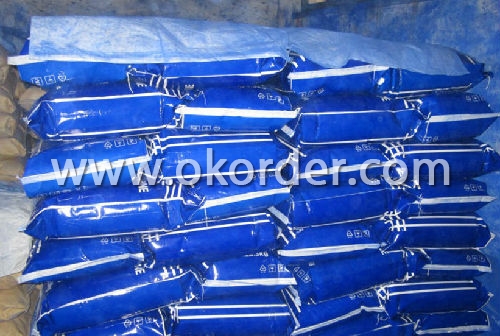



- Q: I need to find powdered paint or pigment that I can throw, for some photographs.Preferably cheap, and that wouldn't stain skin.I've looked into powder paint, though this tends to stain skin for about a week.Thanks :)
- Smash up sidewalk chalk.
- Q: like what's the definition relating to sunlight
- Pigments are substances which are used familiarly to create pictures and printings. Pigments give an object a color when in a field of incident white light. Pigments themselves absorb a set of incident colors of light and reflect all others. When multiple pigments are mixed, their ability to absorb colors is added, such that their ability to reflect colors is subtracted.
- Q: What does the word pigment mean?
- pigment - a substance that gives color to something like paint or ink. Natives used charcoal as a pigment to make dyes. Also: a substance that occurs in Nature which gives color to, say, flowers or skin. Mellanin is a pigment in our bodies that gives our skin color. Albino people have no pigment in their skin and so their skin appears very white and pinkish from the color of the blood in the blood vessels. It's not rare at all to see this word used as a noun, but it can be used as a verb meaning to add a substance to give something color.
- Q: how are the pigments in clothes differ from plant pigments?
- Pigments are pigments. They are made of molecules that absorb some colors and reflect others from the visible spectrum of light, which gives everything color. Black pigments absorb everything and reflect nothing, so black is the absence of color and it is why dark clothing are warmer in winter. White pigments reflect everything and absorb nothing, so clothing that is white is cooler in summer. Most plants have more chlorophyll, a green pigment, in them than other pigments, so the plant is overwhelmingly reflecting green back to our eyes and absorbing the red and blue ends of the spectrum. In fall, when the chlorophyll breaks down, we can see the yellow, orange, and red pigments that are also in the leaf for a few weeks. In this way, all pigments are alike. However, perhaps what your teacher is looking for is that the green pigment chlorophyll in plants not only absorbs red and blue wavelengths of light, it also uses that energy to excite electrons from the molecules of chlorophyll and send them through an electron transport chain that enables light energy to be converted to chemical energy and store it in the C-H bonds of glucose, which is made during photosynthesis. Other pigments, whether they be in clothes or other objects such as cars or just about anything else do not do this. Only plant chlorophyll, or the green pigment in plants, converts light energy to chemical energy. That is the one huge difference. Otherwise, like all other pigments, chlorophyll absorbs some wavelengths of light and reflects others, in the case of chlorophyll, green wavelengths of light.
- Q: I am 33 years old and have pigment dispersion syndrome. My new doctor prescribed laser treatment, to prevent eye damage and potential sight loss. A previous doctor said to try drops, but only if my eye pressure became high-risk. Has anyone in Yahoo's network been in my situation and if so, what did you do?
- Rubbing eyes probably does not relate to pigmentary dispersion syndrome. While pigmantary dispersion syndrome can cause pigmentary glaucoma. Most glaucoma is not pigmantary glaucoma.
- Q: a. chlorophyll ab. chlorophyll bc. chlorophyll cd. carotenoid pigments
- Chlorophylls are greenish pigments which contain a porphyrin ring. This is a stable ring-shaped molecule around which electrons are free to migrate. Because the electrons move freely, the ring has the potential to gain or lose electrons easily, and thus the potential to provide energized electrons to other molecules. This is the fundamental process by which chlorophyll captures the energy of sunlight. There are several kinds of chlorophyll, the most important being chlorophyll a. This is the molecule which makes photosynthesis possible, by passing its energized electrons on to molecules which will manufacture sugars. All plants, algae, and cyanobacteria which photosynthesize contain chlorophyll a. A second kind of chlorophyll is chlorophyll b, which occurs only in green algae and in the plants. A third form of chlorophyll which is common is (not surprisingly) called chlorophyll c, and is found only in the photosynthetic members of the Chromista as well as the dinoflagellates. The differences between the chlorophylls of these major groups was one of the first clues that they were not as closely related as previously thought. Carotenoids are usually red, orange, or yellow pigments, and include the familiar compound carotene, which gives carrots their color. These compounds are composed of two small six-carbon rings connected by a chain of carbon atoms. As a result, they do not dissolve in water, and must be attached to membranes within the cell. Carotenoids cannot transfer sunlight energy directly to the photosynthetic pathway, but must pass their absorbed energy to chlorophyll. For this reason, they are called accessory pigments. One very visible accessory pigment is fucoxanthin the brown pigment which colors kelps and other brown algae as well as the diatoms. From this I would say the answer is c.
- Q: What pigments take part in photosynthesis?
- Pigments are chemical compounds capable of absorbing certain wavelengths of light energy depending upon their color. A pigment will look the color of whatever wavelength it does NOT absorb, In photosynthesis there are two major classes of pigments 1) Chlorophyll-- which absorbs many light wavelenghts EXCEPT green- which comes in two forms, chlorophyll a which is possessed by most plants, algae and cyanobacteria and chlorophyll b found in both plants and green algae. 2) Carotenoids- pigments which look orange and brown and pass the energy on to chlorophyll for use in photosynthesis, hence their name of accessory pigments.
- Q: what is one reason why plants have accessory pigment molecules like chlorophyll b and carotenoids?
- Pigments in plant biology are actually (as you may know) long-chain conjugated systems which absorb light at specific frequencies. This specificity is largely due to the morphological and physical features of each pigment molecule. Since Chlorophyll a only absorbs well at wavelengths of about 400-450 nm and 650-700 nm a plant empowered with only this photosynthetic molecule would have an extremely limited range of spectral absorption. This is where the accessory pigments come in. Chlorophyll b's absorption peaks at 450-500 nm and 600-650 nm and Xanthophyll's at around 400-530 nm, allowing for a much wider absorption range. Carotenes contribute to photosynthesis by transmitting the light energy they absorb from chlorophyll back into the energetic system. None of the pigments, absorb well in the green-yellow region which is largely responsible for the abundance of greens we see throughout nature. The five main pigments are: Chlorophyll a - a blue-green pigment Chlorophyll b - a yellow-green pigment Carotene - an orange pigment Xanthophyll - a yellow pigment Phaeophytin a - a gray-brown pigment Phaeophytin b - a yellow-brown pigment A good illustration of this concept can be found in this graph of Photosynthetically Active Radiation, illustrating the absorption peaks of all the molecules: upload.wikimedia.org/wikipedia/co...
- Q: So i'm writing up a lab report and i'm just a little confused on why scarlet, rosy, cinnabar and vermillion mutants contain the same kinds and amounts of pigments found in wild-type according to paper chromatography. Since they're mutants shouldn't it be different? I don't understand how i'm going to explain that they are mutants when it appears that they have the same phenotype as wild-type. Thank you so much for your help!
- Man pigments determine the colour of the eye. If the composition of pigments is same in all the flies,how can the colour in which their eyes look differ?isn't this a contradiction?i suspect the accuracy of The chromatography test because even a very very slight change in the amount of pigment can significantly change the colour. The phenotype is always different in mutants due to different genotype. in genotype is taken for granted if a change in phenotype is present. Wait just got over into a nice point. Sometimes even if the pigment composition being same different colours m8 be produced due to different allotropes or iro of the same pigment might have different colours!though allotropes(not isomers) have same composition but differ in,their post translational changes r different.since post translational changes r indirectly influenced by genes.this completely explains this case.
- Q: What happens to the yellow pigments in a leaf during the summer months?
- in case you may surely ask a query like that, then it sounds to me such as you opt to have intercourse with one in all your instructors. enable me be the 1st to tell you that it will no longer take place! She's/he's have been given a husband/spouse to do each and all the grimy paintings for her/him! you're basically a pupil and that's a criminal offense in each and each state for a instructor to have something for a minor! Have had a weigh down on a instructor, definite that's a load of bull-****, yet that's the way life is and we the two might desire to provide up dreaming and locate ourselves a hoe which will please us in each way conceivable! that's effective to appreciate that somebody else has wandered that. % me as suited answer on account which you and that i've got lots in worry-loose!
Send your message to us
Phthalocyanine Blue BGS 15:3
- Loading Port:
- Shanghai Port
- Payment Terms:
- TT or LC
- Min Order Qty:
- 1 Metric Ton m.t.
- Supply Capability:
- 7,500MT/Year m.t./month
OKorder Service Pledge
OKorder Financial Service
Similar products
Hot products
Hot Searches
Related keywords
